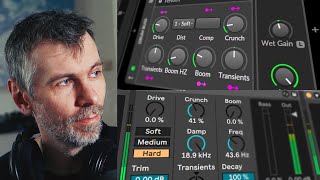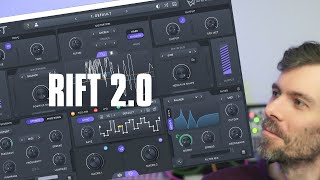
Sep 11, 2024 Tutorial
In today's video, I walk you through my attempt to replicate the beloved early 2000s plugin, CamelCrusher, inside of Bitwig Studio, focusing on its Tube and Mac distortion algorithms, and the filter. Although I left out the compressor and some features like preset saving, I think my version gets pretty close to the original, especially in hitting the key harmonics. You can try my free preset by downloading it from the link in the description, it's a handy alternative to the non-resizable 32-bit VST.

Aug 14, 2024 Tutorial
In this video, I discuss the highly requested Drum Buss device in Ableton Live and how it can be replicated in Bitwig Studio. I provide a free preset download that mimics the functionality of the Drum Buss using native Bitwig devices. I encourage viewers to download the preset and provide feedback to help improve and tailor it to their preferences.

Aug 12, 2024 Tutorial
In this video, I discuss the controversial Sausage Fattener plugin and its effect on music. I explain that it functions as a soft clipper with a compressor in front, preventing audio material from clipping too hard. To demonstrate its impact, I provide a free preset for Bitwig Studio that closely replicates the plugin's sound.

Aug 07, 2024 Tutorial
In this video, I demonstrate how to replicate the Oxford Inflator plugin inside Bitwig Studio. While the Oxford Inflator is essentially just a soft clipper or saturator, I attempted to copy its curve as closely as possible. I provide a free preset for Bitwig Studio users to achieve a similar effect with options like the FX filter plus device, bipolar/unipolar options, or the saturator with a soft knee.

Feb 09, 2022 Tutorial
In this video, I show the new features in Rift 2.0, a powerful plugin for sound design. I demonstrate the different features, such as the dark skin, two panes, presets, and more. I then experiment with different sounds, such as sine waves, noise, and drums. I also show how to use the filtering, modulation, and feedback options. Finally, I recommend downloading the free Rift Filter plugin to get a taste of what Rift has to offer.




